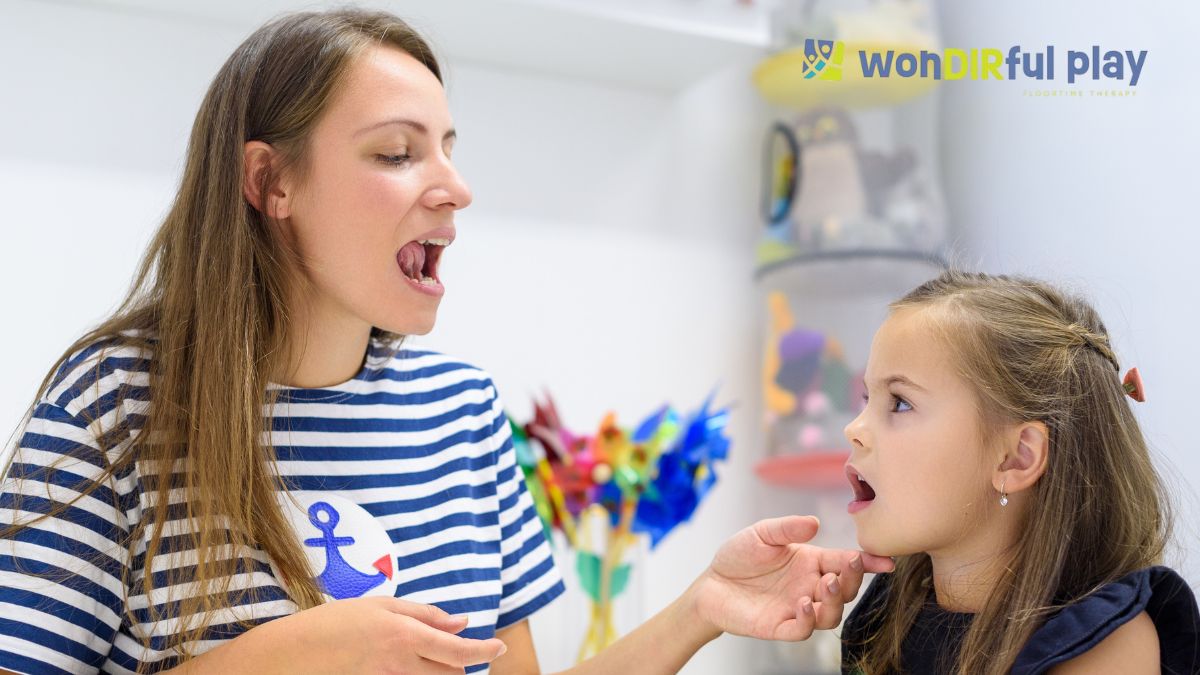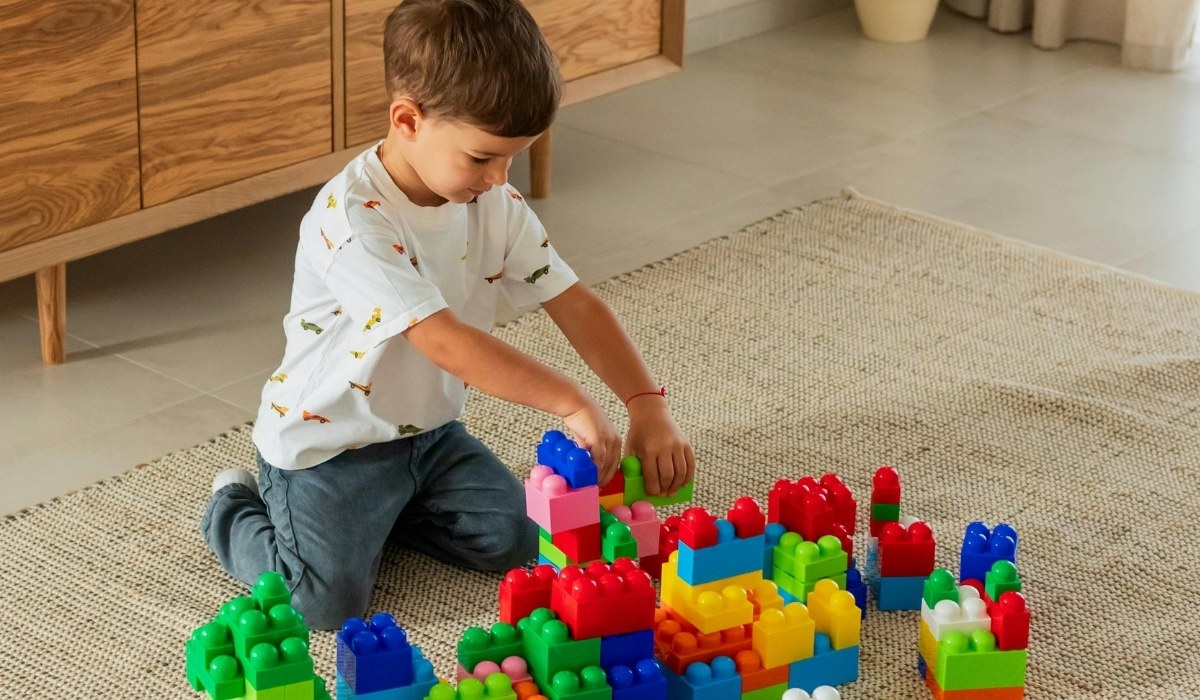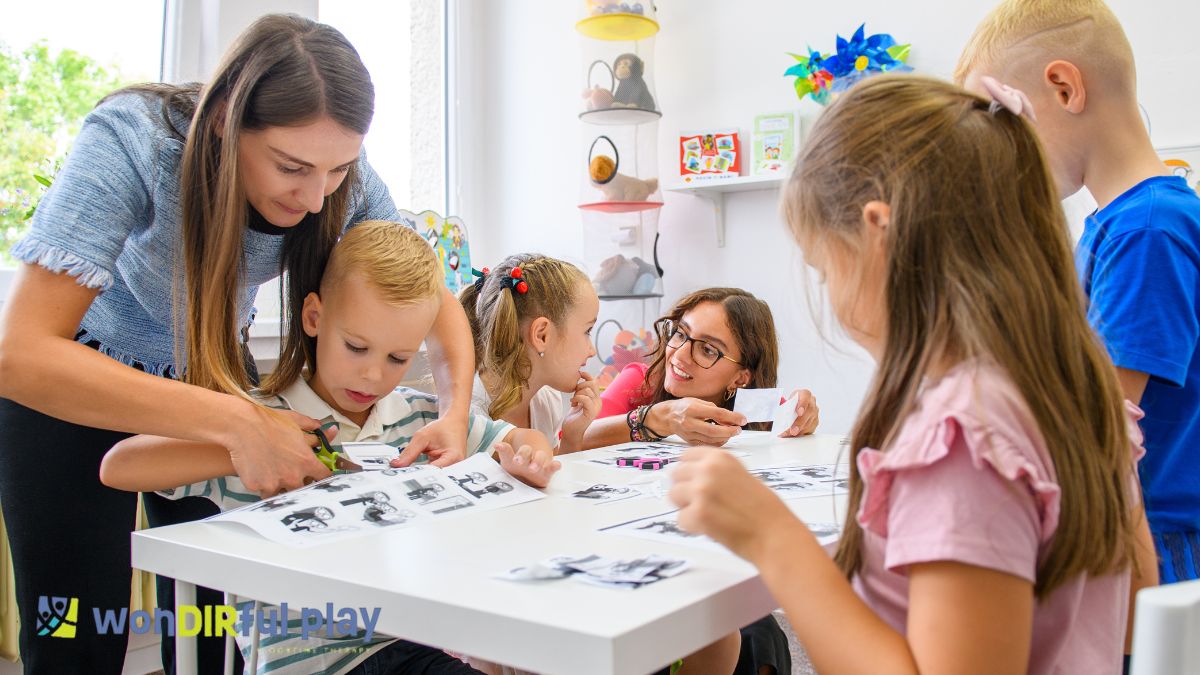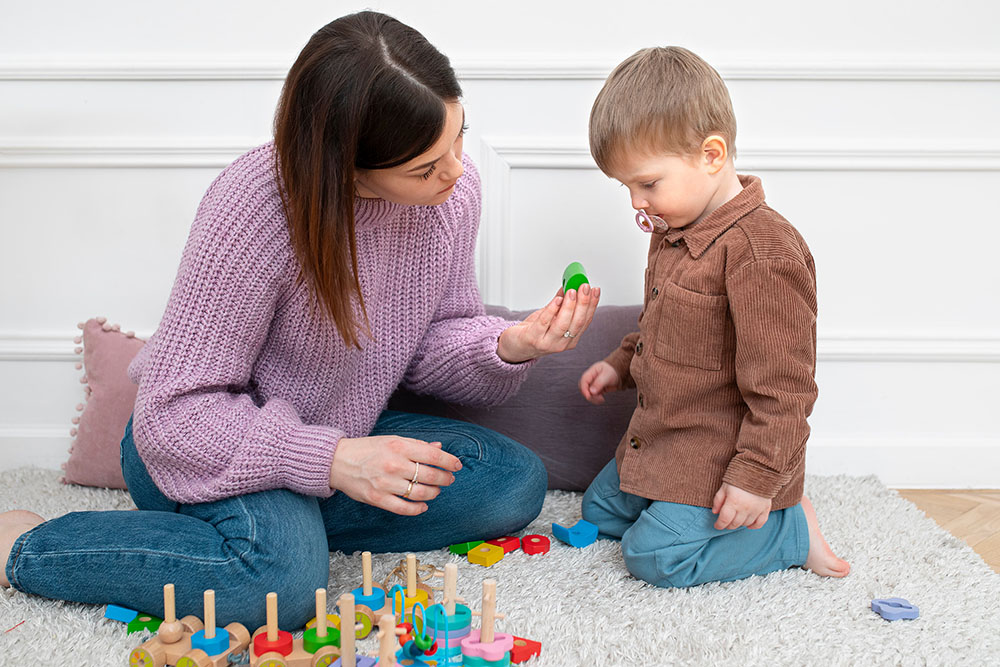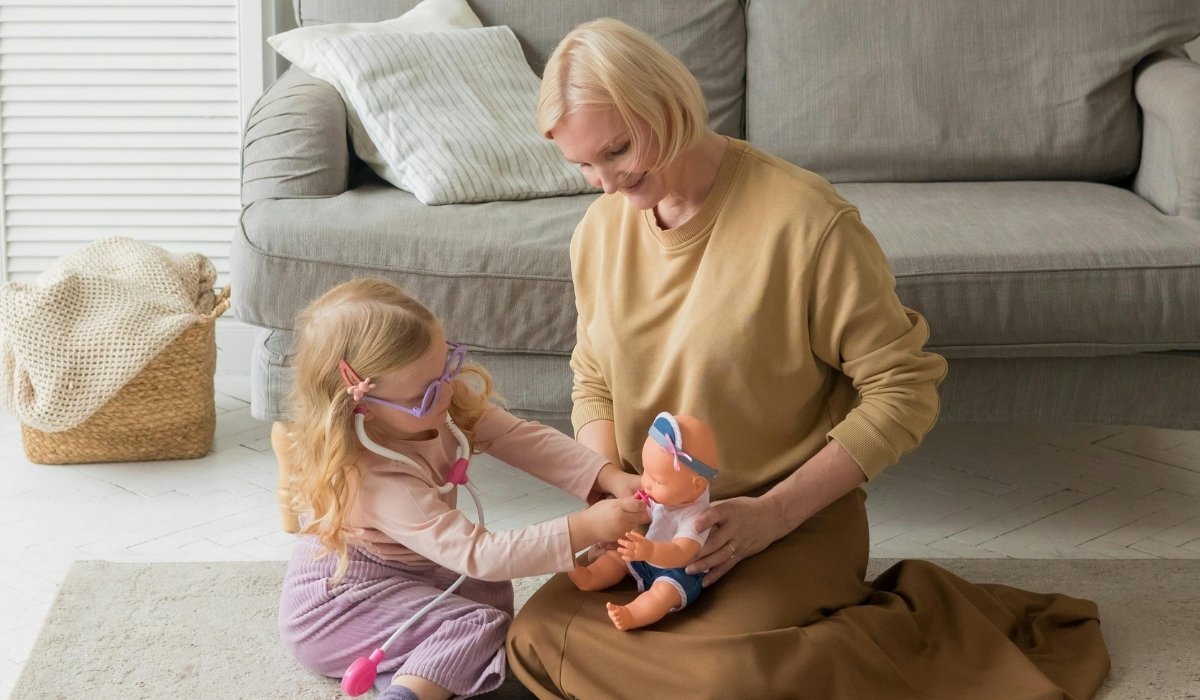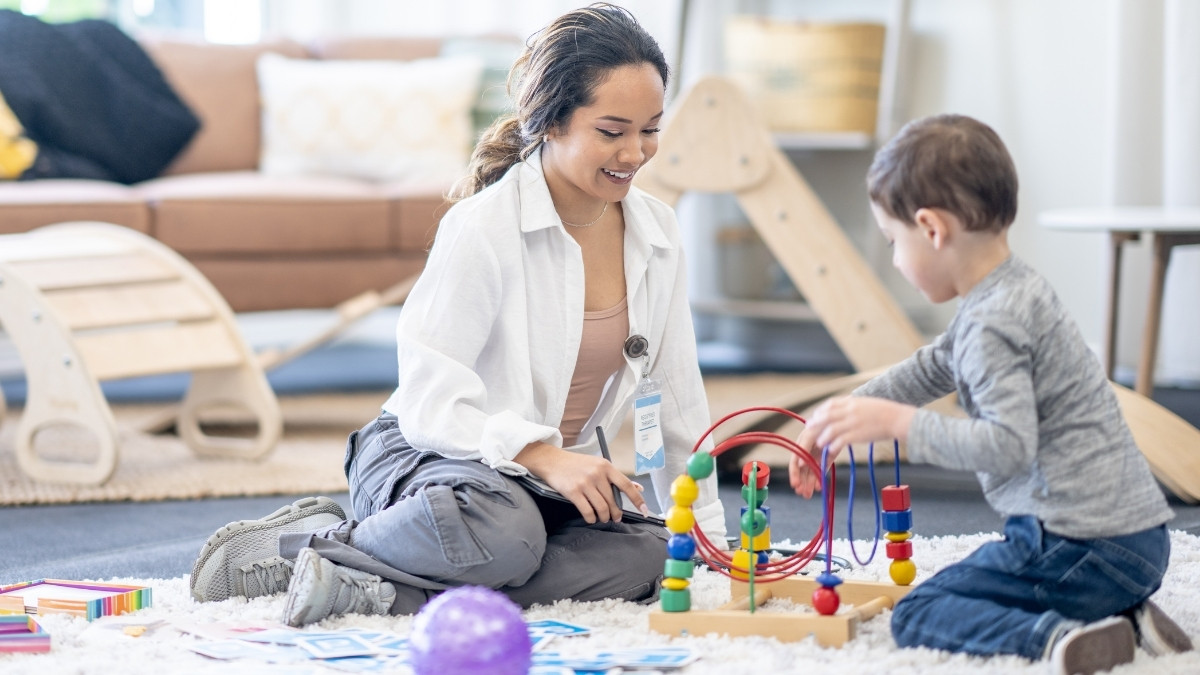DIR Floortime Waitlist Survival: Keep Skills Growing Before Therapy
October 1, 2025
Turn DIR Floortime waitlist weeks into progress. Use simple daily play steps to grow regulation, attention, and communication before therapy sessions begin.

Key Points:
- DIR Floortime waitlist plans give families structured daily routines that build regulation, communication, and shared attention before formal therapy begins.
- Short play-based activities woven into home routines help children practice engagement, language, and problem-solving, ensuring therapy starts from a stronger foundation.
- Consistent tracking, weekly adjustments, and caregiver-led strategies turn long wait periods into active growth opportunities rather than stalled progress.
DIR Floortime waitlist plans give families practical ways to support growth before therapy begins. Simple daily play routines strengthen regulation, communication, and shared attention, ensuring children enter sessions ready to build on existing skills.
A long wait can feel like progress is on hold, yet daily parent-child play still builds the same foundations therapists target in session. This article lays out a practical home plan with clear time blocks, simple tools, and quick trackers you can use right away.
What Is Floortime and Why Waiting Months Shouldn’t Mean Waiting on Growth
Floortime centers on shared attention, warm connection, and playful problem-solving. The goal is simple: follow your child’s lead, join their interests, and open more circles of communication.
DIR autism focuses on three pillars you can use at home today:
- Support regulation so your child feels safe and ready to engage.
- Join and expand interaction through play.
- Help your child climb from simple engagement to flexible thinking with small, fun challenges.
Waits for evaluations and services run long in many systems, so families often begin by learning how to find DIR Floortime services in New Jersey during that gap. A recent national survey of autism centers reported that 61% had wait times longer than 4 months, and 15% reported waits over one year or lists so full they paused new referrals.
Floortime waitlist preparation does not replace professional therapy. It builds readiness so the first sessions move faster. Think of your home plan as pre-teaching co-regulation, engagement, and communication in small, doable steps.
DIR Floortime Waitlist: A 15-Minute Daily Plan That Fits Real Life
DIR Floortime waitlist weeks benefit from structure. The plan below uses short blocks you can repeat through the day. Each target stands on its own, so missed slots do not derail progress. Use before-therapy activities across daily routines with DIR Floortime rather than setting aside long blocks.
Daily Flow (about 15 minutes total, split up):
- 2 minutes: Warm-Up Co-Regulation. Sit near, breathe slowly, match energy, hum or sway together. If your child seeks movement, rock on a cushion or do wall push-ups together. Goal: steady bodies before play.
- 5 minutes: Lead-Follow-Expand Play. Follow your child’s interest for two minutes. Copy actions and sounds. Add one small twist every 3–4 turns: a silly pause, a new route for a car, a peekaboo detour. Goal: more circles of communication.
- 3 minutes: Request and Wait. Offer a favorite object in view but out of reach. Model a sign, point, or simple word. Wait a few seconds. Reward any attempt with big acknowledgment and the item. Goal: more intentional communication.
- 3 minutes: Sensory Reset. Choose one: heavy work (carry books), deep pressure (pillow sandwich if your child enjoys it), or proprioceptive play (crawl through a tunnel of chairs). Goal: return calm and ready.
- 2 minutes: Celebrate and Log. Say what you saw: “You looked at me and handed the car.” Jot one win in a notes app. Goal: track progress without extra workload.
Make it automatic in three daily routines:
- Morning. During dressing, offer two choices with visuals or the real items. Pause to invite a point or reach. End with a high-five ritual.
- Mealtime. Use a “one-more-bite game” with a playful sound. Take turns tapping the spoon. Pause so your child signals “more.”
- Bedtime. Read one predictable book. Stop before a favorite line and wait. Accept any sound, gesture, or look as a turn.
Use timers if you like, but keep it light. The plan should feel like play, not homework. Add Floortime waitlist check-ins every Sunday. Pick two play themes for the week and one regulation tool that worked.
Play That Builds Attention, Regulation, and Shared Problem-Solving
Play drives growth in DIR. You do not need pricey toys. A laundry basket becomes a car. A scarf becomes disappearing magic. The aim is to stretch joint attention and invite back-and-forth.
Weekly Play Themes (rotate two each week):
- Chase and Hide. Peek around doors, pause, wait for a look, then jump out. Add a silly hat next time. This grows anticipation and turn-taking.
- Delivery Driver. Load blocks in a box. Drive to “stops” around the room. Ask, “Where next?” Offer two places and wait for a point or look.
- Obstacle Helper. Build a simple path with pillows and chairs. Model “help” by holding a hand or offering a push. Fade help as confidence grows.
- Sound Band. Tap pots, shake rice in a bottle, pause together. Wait for any sound as a cue to start again. Some families also target eye contact within these beats. This builds control and attention.
- Mini Builder. Stack three blocks, pause with a raised eyebrow, offer the last block for your child to finish the tower. Celebrate the repair if it falls.
Coaching tips for DIR Floortime strategies:
- Use one clear gesture or word per turn.
- Pause longer than feels natural. Count to three in your head.
- Match energy first, then lower your volume to invite a lean-in.
Short wins compound. Three to five successful micro-moments per day create a steady climb in engagement.
Talk More Without Talking More: Communication Gains in Daily Routines
Autism Floortime therapy builds language by growing shared attention and purposeful interaction first, including supports used with nonverbal children. Flooding with words can overwhelm. Clear, slow, and fun works better. Use real-life routines to pull for purposeful sounds, signs, or words.
Set up communication chances without pressure. During snack, hold two foods at your chest. Wait for a look or reach. Model the word or sign once. If your child imitates even partly, hand the snack right away. If not, model again with a bigger facial cue.
Three simple language boosters:
- Repeat the same short script. Use two-word frames like “Ready, set…” and wait. This Simple script shows up across Floortime therapy essentials. Accept any sound to finish “go.” Repeat across stairs, doors, and games.
- Gesture + Word together. Point, nod, and reach as you talk. The pair gives two cues, not one.
- Echo and expand one step. If your child says “car,” you say “red car” once, then play.
A professional guideline notes that comprehensive programs for young autistic children often run 25 hours per week, which shows how frequent practice fuels gains. Home bursts help you put small pieces of that intensity into daily life while you wait.

Sensory and Motor: Quick Setups That Calm and Organize
DIR occupational therapy often weaves sensory inputs to support self-regulation. You can set up safe, short inputs at home that help bodies settle and focus. Always watch your child’s cues and stop if arousal rises.
Three quick stations to rotate:
- Heavy Work Corner. Push a weighted laundry basket, carry a pile of books, or do slow “wall push-offs.” Two minutes can reset focus.
- Cozy Cave. Build a pillow fort. Offer a tight hug if your child seeks it, or try a “burrito roll” in a blanket with face free.
- Movement Loop. Crawl under chairs, hop over tape lines, then crash into a beanbag. Add a simple choice at each turn to invite communication.
Long waits are common across systems, which makes home supports even more important. A recent analysis reported median waits of 525 days for children and adolescents seeking autism-related services in one national system. Small, daily supports help maintain regulation and learning during that stretch.
Track, Adjust, and Advocate While You Wait
Therapy waitlist strategies work best when simple and consistent. A two-minute log is enough. After your final daily play burst, note one successful interaction and one idea to try tomorrow. Record very short clips on your phone to see progress you might miss in the moment.
A weekly 20-minute home huddle
- Review your notes. Circle the play themes that drew the most back-and-forth.
- Pick next week’s two themes. Keep one favorite and add one new.
- Set one regulation plan. Choose the sensory station that worked best and decide where to place it for easy access.
- Prepare intake materials. Save 2–3 short videos that show strengths and challenges. Write down questions.
Parent-implemented models show meaningful gains in social communication and engagement, and more access through telehealth coaching is emerging across programs. Home practice now lines up with these models so therapy can build on established routines rather than starting from zero. PMC
Routines That Multiply Practice: Morning, Meals, Outings, Bedtime
Routines happen every day, which turns them into reliable skill-builders. Use the same mini-targets across each.
Morning (5–7 minutes total)
- Choice Point. Hold up two shirts. Wait for a look, point, or reach. Name the pick once.
- Shared Wait Game. Before opening the door, whisper “Ready, set…” and pause. Celebrate any cue to finish.
- Co-Regulation Check. If energy runs high, do five slow wall pushes together. If energy runs low, do a quick “march parade” to the kitchen.
Meals (5 minutes total)
- Portion Pauses. Serve small amounts to create natural “more” moments.
- Turn Tokens. Draw a dot for each turn you both take in a simple game while waiting for food. Aim for five dots.
- Clean-Up Helper. Guide a simple carry task to the sink for heavy work.
Outings (3–5 minutes total)
- Car Count-Off. Tap the car seat twice, pause for a look, then buckle.
- Store Path. Let your child push the basket for heavy work. Stop at two “decision spots” with a simple choice each time.
Bedtime (5–8 minutes total)
- Predictable Book. Use the same book all week. Pause on the same page daily.
- Quiet Chase. Slow, silly tiptoe to bed with one gentle surprise per lap.
- Lights-Out Script. Whisper the same two-line routine and wait for a final look or sound.
These micro-moments use DIR Floortime strategies without special materials and align with Floortime therapy for autism near me guidance. Small repetitions across the day grow attention, regulation, and purposeful communication with low effort and high carryover.
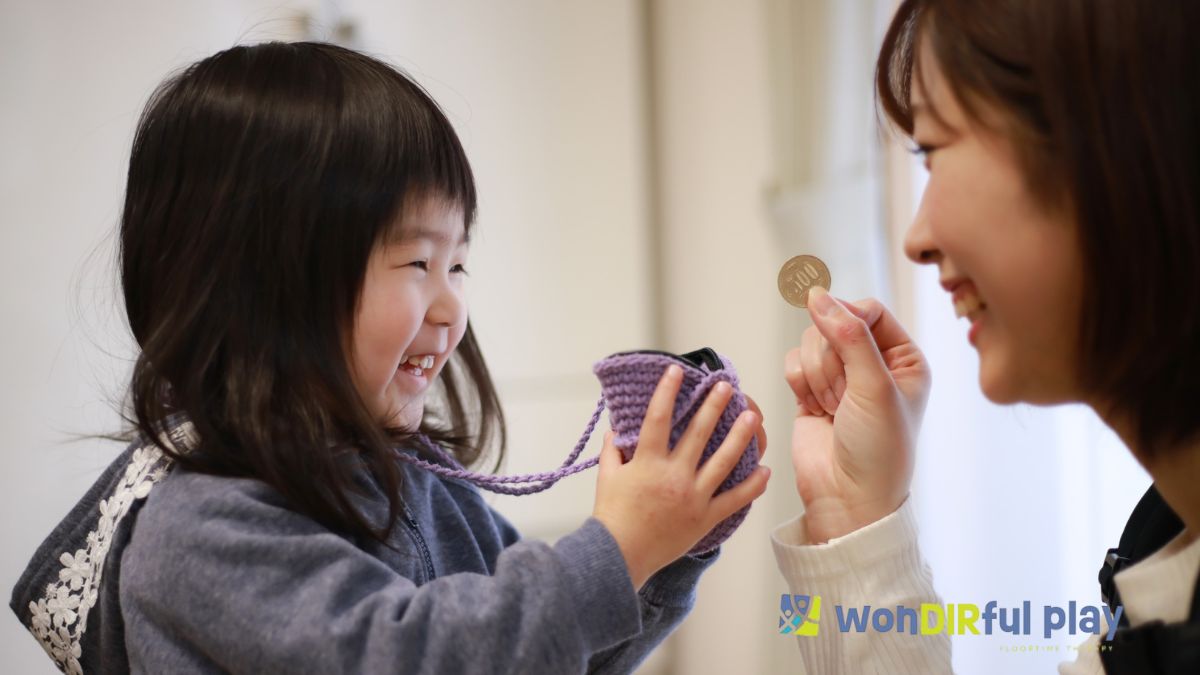
Frequently Asked Questions
What is the average waitlist for ABA services?
The average waitlist for ABA services is approximately 5.5 to 5.7 months, based on caregiver and industry surveys. Many families wait several months or longer, especially in areas with limited clinician availability. Diagnostic delays can increase the total wait time before treatment begins.
What is the purpose of DIR Floortime?
The purpose of DIR Floortime is to build core developmental skills, such as self-regulation, engagement, and communication, through play-based, relationship-driven interactions. By following the child’s lead and encouraging emotional growth, DIR Floortime supports cognitive, social, and emotional development across home, school, and clinical settings.
How long does DIR Floortime last?
DIR Floortime typically lasts 2 to 5 hours per day, divided into multiple 20-minute sessions, and continues for months or years depending on developmental goals and progress. The schedule adapts to each child’s needs, blending therapist-led and caregiver-led interactions throughout daily routines.
Start Floortime Play That Lasts Beyond the Waitlist
Families seeking DIR Floortime therapy in New Jersey can bring this home plan to the first visit and build on it from day one. WonDIRfulPlay supports parents through play-based coaching that fits real routines and reduces stress for both child and caregiver.
Reach out to schedule an initial call and learn how a brief home assessment plus a simple weekly plan can turn waitlist time into growth you can see.
Recent articles


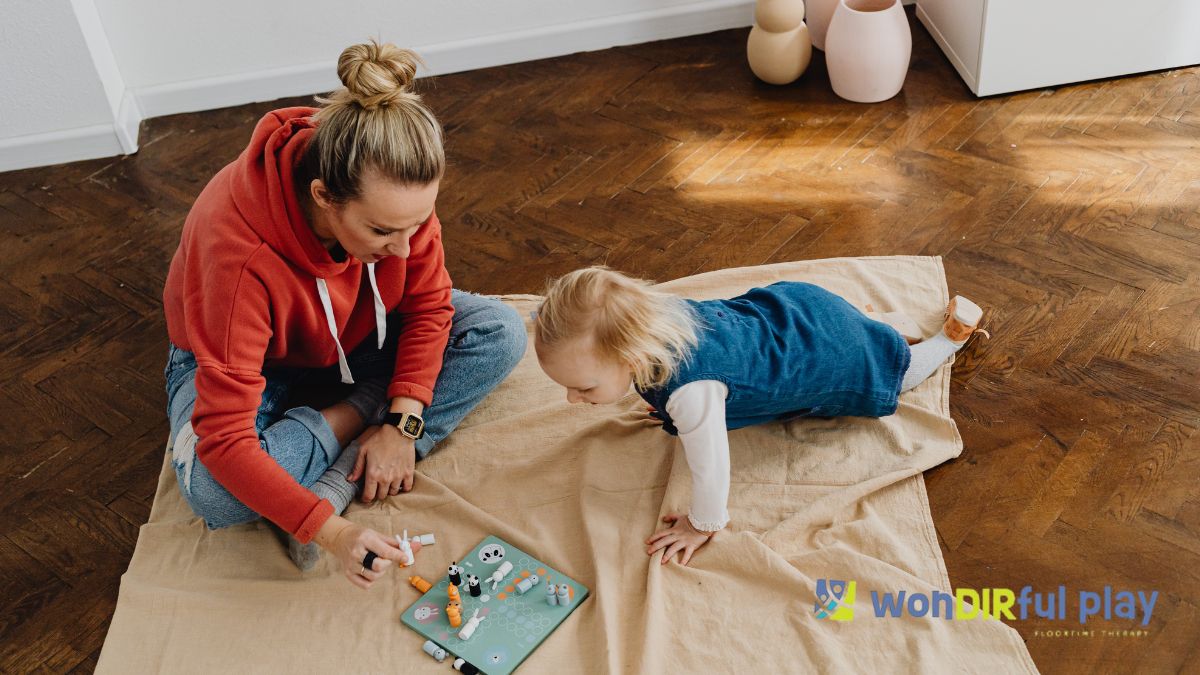


-ink.jpg)
-ink.jpeg)
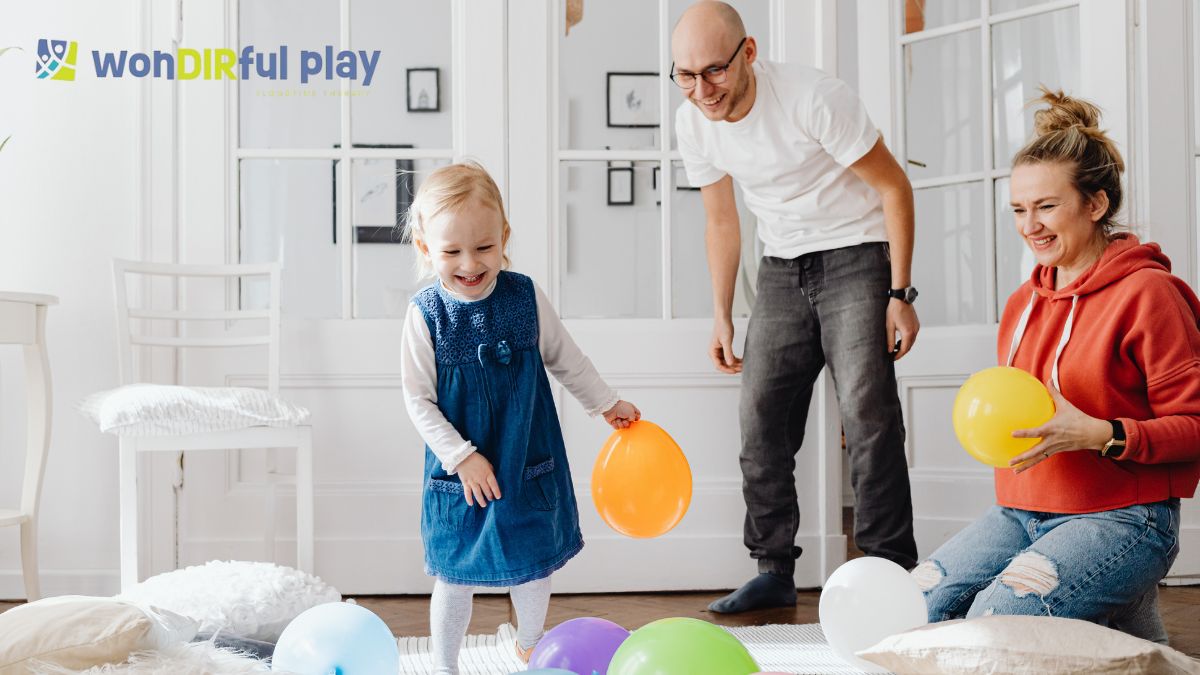
-ink.jpeg)
-ink.jpeg)
-ink.jpeg)

